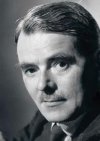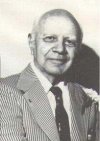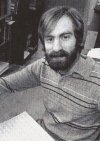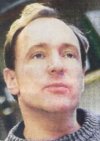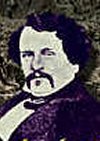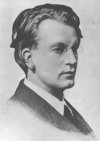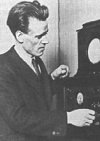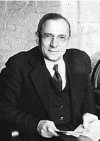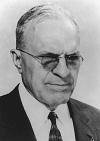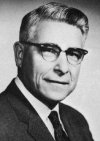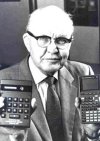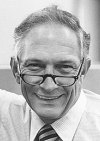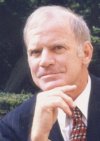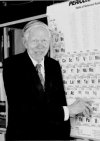| Cooperation with Kyrgyzstan and the CIS Nations | ||||||||||||||||||||||||||||||||||||||||||||||||||||
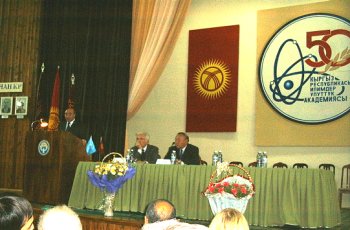 |
During November 2004 WIF representatives were the guests of the Academy of Sciences of the Kyrgyz Republic. This was to celebrate their 50th anniversary as an academy and where all the Presidents of the Academy of Sciences from the twelve CIS (Commonwealth of Independent States) nations (including Russia) participated over the 4-day of scientific events. The photograph shows the leader of the Kyrgyz Republic Academician Dr. Askar Akaev addressing the Academy of Sciences and many international guests. WIF representatives had meetings with high ranking government officials whilst attending the conference with a view to create a long-term cooperative agreement with regard to science, engineering, technology and economics. Contact and discussions with the Government of Kyrgyzstan are ongoing and where further details will be available in the next Edition of the Scientific Discovery newsletter. |
|||||||||||||||||||||||||||||||||||||||||||||||||||
"Your Excellency and distinguished guests, I am greatly honoured by speaking to you today on the occasion of your nation’s celebrations dedicated to the 50th anniversary of the National Academy of Sciences of the Kyrgyz Republic. Just one week ago I was in the company of Mikael Gorbachev at the annual gathering of Nobel Peace Laureates. His speeches are as invigorating as ever and I am sure that if he were with us he would offer his warmest greetings to the nation of Kyrgyzstan and to all the CIS national academy presidents who are here today. Although I can totally support your nation’s assertion that education is a prerequisite for economic prosperity I shall talk to you today about the step after this and how education mixed with creativity can drive your future economies. Science is the great universal resource and leveller of humankind. Scientists and engineers of every nation in the world understand each other through mathematics and the knowledge of the physical and abstract worlds. Chinese scientist with scientists from the United States work in cooperative scientific endeavour together and which is so for any joint or multilateral engagements in science. Scientific endeavour and discovery are therefore the great bonding agents of humankind. I therefore start my address to by stating that the most powerful and evolutionary force in the universe is that of ‘Creative Thought’. Everything that human civilization undertakes is controlled by the inner thoughts of mankind. Without this inherent force of creativity that resides in all humanity, no progress would be attained or indeed sustained. It is the thoughts of humankind that drives forward the frontiers of science and human civilization itself. The world is beginning to witness a great sea change in economic power. In less than 20 years time on its present path, China will become the dominant economic power on our planet and where the USA will be ranked the 2nd largest economy in the world. By 2040 India, where I was in discussions last year with one of our members Dr Chidambaram, a cabinet minister and the chief scientific adviser to the prime minister and the government of India, will have become the third most powerful economy in the world. Indeed, it was one of our members, His Excellency Jian Song the former vice-premier of China who initiated this great change and who is the architect of China’s industrial development. For it was professor Song who created China’s industrial ‘blueprint’ and which has been totally built upon through the application of science and technology. I hope to be with him and others in China next year. Many of the CIS nations are in close proximity to these merging economic powers and where they are very well placed to exploit the situation to there fullest in future years. Therefore what does this economic transition mean for the rest-of-the-world over the next three to four decades. Well, those who do not understand the vital significance of science will not get very far but where those nations who embrace science will transform their economies into world-leading economies. One has only to look back to relatively new nations such as Singapore who were little more than four decades ago living in abject squalor and poverty, but who’s leadership realised that technology was the base of all new wealth creation. Singapore now has one of the highest living standards in the world and where China has taken great note I believe. Indeed, Singapore and not Hong Kong has possibly been the minnow that China initially began to understand what mechanism creates great wealth. In this respect Singapore started by copying the world’s technologies, very much like what Japan did a few decades ago, but where they had the direct advantage of lower labour costs. I respectfully state that the CIS countries have many of the same attributes now that can be seen as great strengths if they can exploit these opportunities successfully. But China has like the rest-of-the-world not moved as yet into the same dimension and mindset that created the first Industrial Revolution in my country. This unparalleled economic revolution in the history of the world, as it was the first, happened over a mere 50-years in the early part of the 19th century. But this did not only make Britain the largest and most powerful economy in the world by far in a mere half century, but also provided much of the basis of the modern world that we all see today. This difference was not I respectfully tell you my friends from the endeavours of engineers and scientists like myself but was in the main the fruits of what might be termed as ‘amateur’ scientists. This may seem a strange parody but in this respect I now give several examples of what I mean, some from the past and some from the present day. I therefore start this part of my address by stating that creativity resides in every person on our planet and where this pre-eminent human resource has made the modern what it is today and what it shall be tomorrow. Without it, humankind’s very existence could not continue indefinitely. Just a few examples of people who have changed the world are,
Therefore those nations who realise this and that the 21st century and beyond requires a totally holistic approach will excel. But those who do not comprehend this philosophy will not. It is as simple as that. Therefore what we see from this information above is that many of the world’s most prolific inventions that now drive all advanced economies did not stem from institutional science but from individuals, both men and women, who had a driving force to unravel and create new and meaningful things. This does not belittle you and me as professional engineers and scientists. Indeed, we are the ones who provide the basic breakthroughs through scientific discovery that allows these creative individuals to flourish and where our work is of paramount importance, as without it there is no further progress throughout the world-at-large. But I have to say in all truth that we as leading scientists and engineers are very poor catalysts in transforming our newly found knowledge into meaningful inventions. This is where I wish to enlighten your knowledge further today. The future world in this century will create global technologies that are unimaginable today. Indeed, what we see as our most advanced technologies now will be seen at the turn of this century as basically primitive technologies. Within our institution we have in consultation the scientific leaders of the two firms that created the most prolific inventions of the 20th century. Those companies are Texas Instruments and Bell Labs and where the inventions that I allude to were the ubiquitous ‘transistor’ and the ‘integrated circuit’. The reason I say that these two inventions were the greatest inventions of the last century is because they have provided the basis of a new global industry within a mere fifty plus years that now turns over in excess of US$1.7 trillion annually. Indeed, no other inventions have come close to this production of wealth creation in such a short a period of time in any century, as even the productive use of electricity took over a century to unfold. Therefore if a nation can capture such future inventions and keep the benefits of such inventions within their grasp, a nation will have the propensity to create highly successful economies. This my dear friends in science is where the future resides. Indeed, in this respect we have to fully understand how we can obtain these new economic miracles that will come as night follows day. I now state that the present world order is insular. What I mean by this is that academia (university research), government (research facilities) and industry (R&D facilities) keep their involvement exclusively to themselves or with limited collaboration with others. To all intents and purposes their research effort is in-house and where the amateur scientist or lone inventor is not allowed to enter into these insular domains. But what nations should really be providing in future years is the creative infrastructure for an inclusive system and where the people’s creative thinking and a nations research effort are totally bound together. Indeed, this is where the true secret of future wealth resides and where all successful nations in this century will require the full thinking and participation of their nation’s people. And this is where Kyrgyzstan like all of the new former Russian states can break into this future way of forging a wealthy economy in years to come for their people, as you have not as yet been affected by Western ideals and the rigid structures that they adhere to. Indeed, if you comprehend what I say today you have nothing to fear in future years for your vision and strategy will be that of the future. So how shall we create this successful future that your nation and your people require? Anyone with a modicum of common sense should after understanding the history of science and technology comprehend that scientific institutions (your universities), industry and the people’s thoughts should flourish together and not in isolation. For without the input of the people’s creative thinking the ‘innovation chain’ is not complete, is positively broken and cannot excel. My institution has therefore started to put forward to all governments around the world that they should build what we have termed the ‘people’s incubators’. What this means is that a nation’s indigenous scientists and engineers have to involve their people’s creative thinking in their nation’s economic development, for if they do not, they will be missing the vital and crucial link that will provide the future world with immense wealth. If you do this we on our part as a world-leading consultative institution would act as a technological sifting mechanism, identifying which creative thinking of your people (including those of your professional scientists, amateur scientists and inventors) will give your scientists and industries the successful technological products that they look for throughout this century. I cannot stress more the importance of such a strategy for your nation and for all those former states of the Soviet Union who are represented here today. You have also to comprehend and remember that if you go down this path of global destiny, my institution that embodies the world’s leading scientists and where our first president was Nobel Laureate Glenn T. Seaborg will help you.
|
||||||||||||||||||||||||||||||||||||||||||||||||||||
 |
My institution's ORE-Incubator Centres linking the people's creative thoughts with Government, Academia and Industry bring into being a whole new dimension to future economic development. In this respect no nation as yet has adopted such a revolutionary way of thinking, but which will be the norm, not only in this century but also in the 22nd century and beyond. The history of science and technology has shown that the mentality and thinking of advanced nations is based upon the technological exploitation of scientific phenomena. Indeed, the modern world has been constructed on this basis. But, unfortunately the mechanism of how the modern world has evolved is not fully understood. Indeed, if we go back in time and research into who actually made the modern world what it is toady we will find that over 80% of the inventions that have physically changed the world came not from leading scientific institutions but from amateur scientists, engineers and independent commercial inventors. The history of humankind is full of such people. |
|||||||||||||||||||||||||||||||||||||||||||||||||||
| Therefore if the CIS nations have the foresight and great intuition to comprehend that by joining the CIS’s great scientists and engineers with the people and the world’s leading scientific minds, the CIS will have the propensity to lead the world and not to follow. Indeed, if the CIS nations construct the mechanism to create the right cooperative environment between respective states, their countries can become in less than thirty-years a centre of economic dynamism. We as scientists of the first-order greatly believe this. In this respect therefore if the political will of the Commonwealth of Independent States is there, this goal becomes practically achievable; but only we stress, by bringing together the concepts put forward here today. In this respect by integrating the physical resources of the CIS nations, their people’s creative thoughts, their industries and their academic institutions and linking them all with the leading-edge advice from the world’s foremost scientific and technological minds, you will create what your people aspire to. Indeed, whole new indigenous technologies can have the direct action of creating whole new global industries. These Open Research Establishment Centres that I talk about when fully developed will form a global network of ‘linked’ creative research centres allowing the thoughts of humankind to flourish. They are designed as interactive research incubators for the development of the indigenous socio-economic strengths of nations. Overall, these centres of excellence provided access for the release of humankind’s creative thinking. |
||||||||||||||||||||||||||||||||||||||||||||||||||||
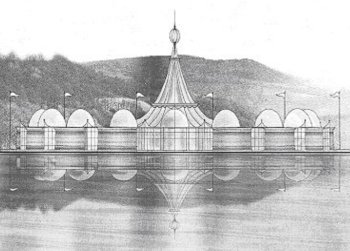 |
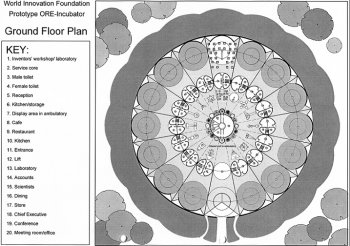 |
|||||||||||||||||||||||||||||||||||||||||||||||||||
Each incubator centre comprises of fourteen separate incubator laboratories that are serviced by around sixty qualified scientists and engineers and have a Centre Director. These incubator centres are equipped with the technology applicable to the particular indigenous people and nation. Where a new scientific phenomenon is discovered that has the potential of creating immense wealth, the incubator concerned is given special resources to install the relevant technology and global collaboration is set in motion. When the technology is developed into commercial products the wealth is shared between the host nation, any participating nations and the global corporations that have collaborated with the specific development programme. The only reason for the centres is to provide ‘new’ wealth distribution for poor countries and the world-at-large and where this unique collaborative global arrangement is an equitable system. What we mean by this is that eventually all nations achieve the same quality of life across the world. These centres have integrated computer systems linking all other incubators, their researchers and the indigenous inventors together. Within the centres there are management, administration and accounting units that deal with the day-to-day functioning of the incubators. These incubator centres are fully functioning with rest rooms, dining areas and normal facilities associated with modern research centres so that people from different disciplines can interact at any one time. Centre Personnel Director - The centre's Director is a qualified engineer or a scientist with where possible an engineering bias. His or her finest quality is that of a continual devotion to scientific invention and discovery. The director has an overriding concern for creating all things new that produce 'new' wealth for the well-being of the indigenous people. Creativity is seen as the most sort after quality in the centre's Director. Research Engineers and Scientists – The research staff comprise of qualified hands-on engineers and scientists working within the industrial application sectors. Management and Administrations – A centre manager functions over the day-to-day running of the centres including control of the reception area, accounts, security, cleaning and hygiene activities, kitchen / canteen / restaurant personal, maintenance staff, conference organising and management. External Advisers The centres will all be advised by many of the world's leading scientists and engineers including at the present time seventy-three unique individuals who have Nobel Prizes. In this respect also our global network is possibly the most prolific contact system of leading interactive minds in the world today. Each centre will have a specific advisory board of six leading scientists and six leading engineers from throughout the world. The advisory board in turn will have access to the full advisory membership of my institution's immense scientific network of contacts across the globe. Indeed, these leading-edge advisors will act as a unique sifting mechanism for all new developments and discoveries. And where in this respect and in concert our membership network now extends to over three million scientists, engineers, technologists and inventors. Each centre would also be interlinked with other incubator centres so that collaboration and scientific help can be fully activated between these uniquely and functional centres of excellence. External Collaboration Collaboration with all the universities associated with the members of my institution can also be put in place. In this respect my Foundation has over fifty vice-chancellors and Rectors from many parts of the world within consultation. These people represent some of the finest universities that humankind has created to date and where some were formed many centuries ago. Therefore secondment of specialist knowledge is therefore achievable from many innovative channels of communication. Indeed, several of our members are presently driving or have in recent years overseen the global research effort for such industrial concerns as BP, Philips, Lucent Technologies (Bell Labs), GlaxoSmithKline, Du Pont, Texas Instruments, British Telecom. In this respect we can bring these people and corporations to bear down on your nation's economic development and thereby build upon your country's indigenous strengths. I therefore conclude my speech and address by stating that if Kyrgyzstan and the CIS nations take up this challenge you will be supported by many of the world’s socially conscious-led scientists who only wish for nations like Kyrgyzstan and those of the CIS countries to be provided with a good and accomplished life for their people. Indeed together, if we can help in the creation of the indigenous future wealth of the CIS over the coming years, we shall in a small way have created a better future world, where wars and poverty can hopefully be banished forever. Thank you. Dr. David Hill MSc (Eng.) MBA PhD Hon.DSc FWIF CMgr FCMI CBld MCIOB FRSA Chief Executive World Innovation Foundation United Kingdom |
||||||||||||||||||||||||||||||||||||||||||||||||||||
| www.thewif.org.uk - The World Innovation Foundation - November 2004 - February 2005 | 3 | |||||||||||||||||||||||||||||||||||||||||||||||||||

